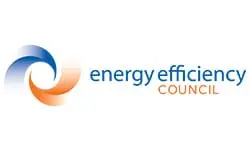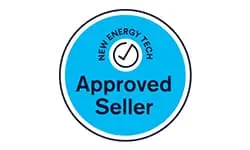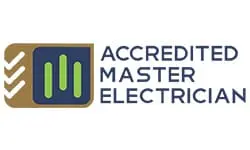Get A Free FEasibility report today
ENQUIRE NOWBusiness Solar Rebates in Australia
No matter what size your business, switching onto solar can be a smart move. For 9-5 businesses in particular, solar panels are ideal. A well-designed commercial solar power system can be cashflow positive from 1 day.
Now, there are several generous business solar rebates in Australia that make solar an even more attractive business proposition. This page describes some of the commercial solar rebates available to help accelerate the payback time for business solar in Australia, namely: Federal Government business solar rebates, Feed-in tariffs and State government commercial solar rebates
Under the Federal Government’s Renewable Energy Target there are two legislated schemes that provide an incentive for installing commercial solar power systems:
Certificates (LGCs)
Certificates (STCs)
The purpose of LGCs and STCs is to provide businesses and – in the case of STCs – households as well as businesses with an incentive to invest in renewable energy. LGCs and STCs have proven to be one of the government’s most successful financial incentives for solar, resulting in Australia having the highest installed solar PV capacity per capita in the world.
What’s the Difference Between LGCs and STCs?
Business installing solar power systems less than 100kW are eligible for STCs; larger systems qualify for LGCs. The table below shows the main differences between LGCs and STCs.
Whilst both STCs and LGCs are excellent ways of reducing the cost of solar, businesses who want to minimise the upfront system cost generally prefer STCs. This is because the value of STCs is received as an immediate benefit in the form of a point-of-sale discount on the sales invoice. LGCs, on the other hand, are paid over several years.
LGC Rebates Upfront
Kuga can pay your expected LGC revenue upfront if this is preferable for your business. Receiving the LGC revenue upfront reduces capital cost of your system which may be advantageous if the solar project is budget restricted.
STC & LGC Phase-Out
The Federal Government has stated that the value of STCs will reduce each year by around 6-7 per cent. This will continue up the end of 2030 when the scheme is completely phased out. This means the sooner your commercial solar power system is installed, the more your business will save on the upfront cost.
LGCs will also be phased out by end of December 2030. Whilst there is no stated reduction in LGC value from the Federal Government, the chart below shows that the value of LGCs has declined over the last 4 years. Delaying purchase of a 100kW-plus commercial solar system means taking the risk that the value of LGCs will fall further.
Source: Renewable Energy Hub
Energy Efficient Communities Program
The Federal Government is also targeting solar uptake through its Energy Efficient Communities Program. A new round is opening for businesses in the food and beverage manufacturing sector from January 2022. Whilst not offering grants for solar, there is money available for investment in monitoring systems to better manage energy use and energy audits. At Kuga, we monitor government solar grant programs closely and know what’s available and when. To find out if there’s a grant program suitable for your business, get in touch.
Begin Your Solar Journey and
Enjoy Long-Term Savings Now!
Unlock Solar Power Rebates
STC & LGC Phase-Out
Whilst solar feed-in tariffs are not a solar rebate, they are a financial incentive for installing solar. With feed-in tariffs, your business is paid a rate per kilowatt hour for any excess solar electricity exported to the grid. This appears on your electricity bill as a solar credit (or words to that effect). Australian solar feed-in tariffs have reduced in value compared to 10 years ago; they also vary from state-to-state with only the Victorian Government setting a mandated minimum feed-in rate.
Now worth around 7-10 cents per kilowatt hour – sometimes more – depending on your location, retailer and tariff structure they should be seen as the ‘icing on the cake’. These days, the main way to save with solar is to maximise usage of the solar power generated within your business operations rather than exporting it to the grid. That’s because the rate you’ll pay for grid electricity will be around 2-3 times higher than the amount paid for solar exports.
Getting the best rate for electricity and the solar feed-in is time-consuming but important. It can make a substantial difference to your bottom line. Kuga provides an energy audit service to commercial clients which includes electricity rate and contract review. Get in touch if this is of interest.
As of December 2021, Victoria is the only state in Australia with a state government scheme that provides businesses with rebates for purchasing a solar PV system. Some other states offer low-interest financing for commercial solar power system, and from time-to-time grants for solar power are announced. These can be for the agricultural sector (such as Agriculture Victoria’s On-Farm Energy Grants) and can be significant in value. Get in touch to find out what’s available in your state.
Victoria’s Solar for Business Program
Designed for small business, this program provides a business solar rebate worth up to $3,500 (at December 2021). Once all 5,000 forecasted rebates have been allocated for 2020-2021, the rebate value will drop to $1,750. The rebate covers up to 50 per cent of the cost of the rooftop solar system and works as an upfront discount on the purchase price. Both businesses that own their premises, as well as those who rent can apply for the Victorian business solar rebate. The rebate is for approved solar PV systems up to 30kW.
All types of organisations – excluding government organisations – can apply for this rebate. Eligibility criteria include:
What Solar Rebates is Your Business is Eligible for?
For expert, up-to-the-minute advice on commercial solar rebates, get in touch with our commercial solar team at Kuga today. With over 5,000 commercial solar projects successfully delivered in the last 5 years Australia-wide, we have the know-how to help you get the best solar rebates and maximise the return on your solar investment.
Capability Statement
Download our Capability Statement to read more on our company, our people, our capabilities and our projects.
DOWNLOAD NOW
Check Our Latest Videos
Explore our recent projects and Youtube channel to see how we carefully execute our installations to meet the unique business requirements of our customers. From large-scale solar roof installations to LED lighting upgrades and solar battery storage systems, there’s no project too big or small for our team
Contact Us
Get In Touch, We Love Talking Solar!
Fill out the form below to contact us!





Industry Partnerships
















 Get Quote
Get Quote Call Now
Call Now